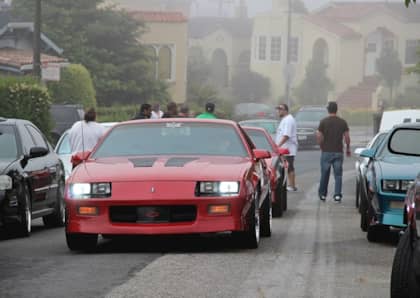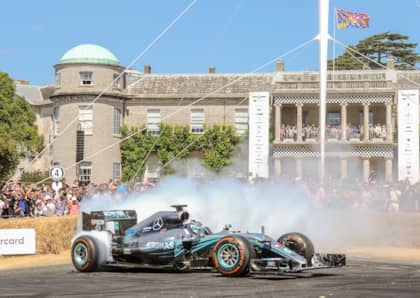10 Strangest Badge-Engineered Vehicles of All Time
What do you do when there's a missing link in your line-up and you've run out of development dollars? If you're a major car company, you do your best to beg, borrow and steal a stop-gap model—sometimes in-house, sometimes from another brand—slap on a new badge and shove it into showrooms with your fingers crossed.
Sometimes, everything works out. Most of the time, if doesn't. Check out these badge-engineered weirdoes that not even a salesman two units away from their monthly quota could love.
1. Kia Elan
The Kia Elan took a circuitous path to its badge-engineered birth. Chances are those two names are familiar apart but uncomfortably incongruous together, with Kia being known primarily for affordable mass-market machines and the Elan typically associated with Lotus, which marketed the roadster throughout the '80s.
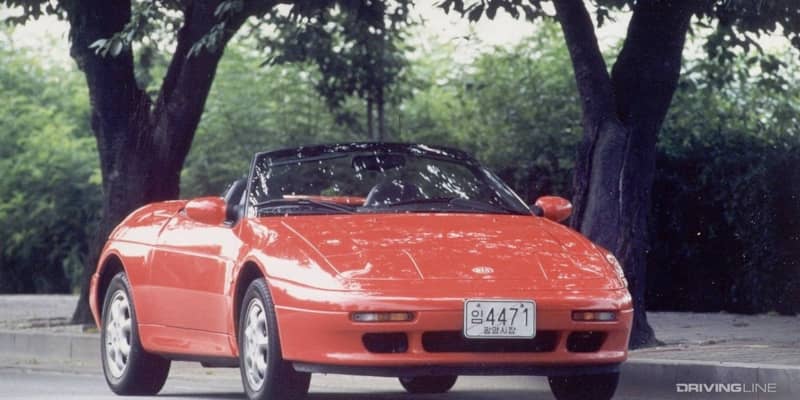
It turns out that in the early '90s Lotus was looking for a little extra cash. Enter Kia, which knew that the British brand was about to end production of the front-wheel drive Elan convertible. Somehow, a deal was struck that would see almost nothing visibly changed about the sports car other than the tail lights at the back and the badge on the hood.
Marketed as the Kia Elan all the way until 1999, it actually picked up a little straight-line speed from the 151hp 1.8L four-cylinder engine that its new parent was forced to use (after losing out on the rights to the Isuzu-built engine favored by Lotus).
2. Lincoln Blackwood/Lincoln Mark LT
If you exclude whatever the Escalade EXT might be (hint: a chromed-up Chevrolet Avalanche), Cadillac has never made a true pickup truck. Why not? Because Lincoln had already tried, and failed.
Twice.
The first effort was the Lincoln Blackwood, a full-size truck that took everything people liked about the Ford F-150 and made it more expensive and/or harder to use. Witness the carpeted cargo bed with split tailgate and power tonneau cover (which was produced by a third-party supplier), making it effectively impossible to actually haul anything that might sully its stately appearance. Fewer than 3,500 people cared enough about the Blackwood to take one home, a far cry from the hundreds of thousands of F-150 sales.
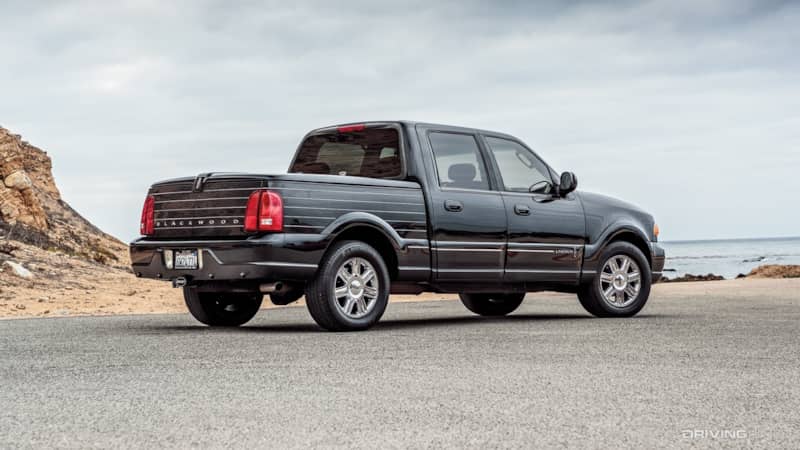
Next up was the Lincoln Mark LT, a much more blatant badge-swap of the F-150 that didn't even really try to differentiate from its Ford sibling. Sure, there was a unique grille, and some JC Whitney-style chrome cladding on the rocker panels, but other than that this was a Blue Oval job with a scary-high window sticker. Offered just a few years after the Blackwood disaster, it would chug along until the 2008 recession killed Lincoln's pickup dreams dead and Ford figured out that people would pay a ton of money for regular F-150s with the word "PLATINUM" etched into the fenders.
3. Aston Martin Cygnet
We've already gone in-depth on the travesty that was the Aston Martin Cygnet, but we'll sum it up for you here: vaunted luxury performance brand runs out of cash, gets scared by upcoming emissions regulations and makes a backroom deal with a very surprised mainstream Japanese brand to buy a tiny two-seat economy-hatch.
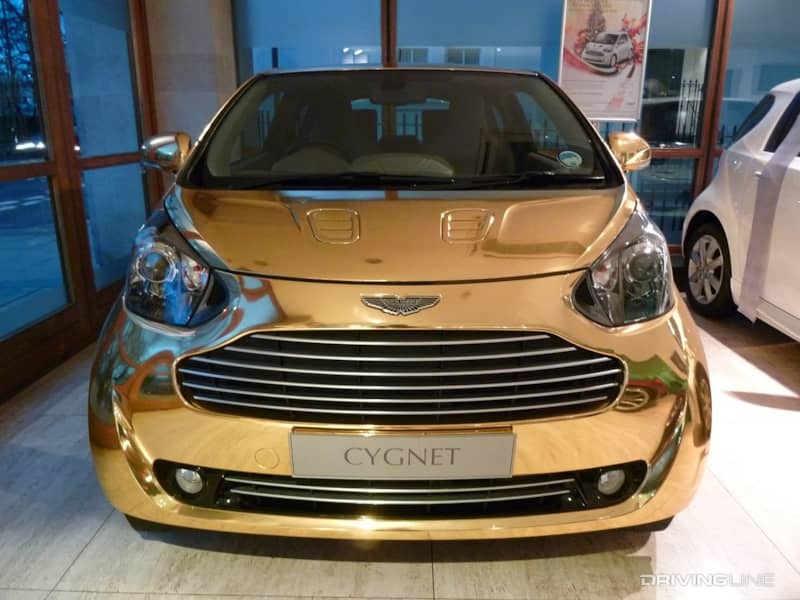
The end result? A Toyota in Aston Martin drag sold at a shockingly high price to a handful of people we fervently hope are still getting holiday cards each and every year from the Gaydon, UK corporate HQ.
4. Honda Crossroad
For a five-year period in the 1990s, Honda decided that the best way to deal with the SUV-sized hole in its showrooms was to import the Land Rover Discovery lock, stock and barrel, and etch its own logo onto the grille. The Honda Crossroad was entirely lifted from Rover (which Honda owned 20 percent of at the time), with no improvements or updates made, meaning that it offered fantastic Land Rover reliability to thousands of soon-to-be-disappointed Honda loyalists.
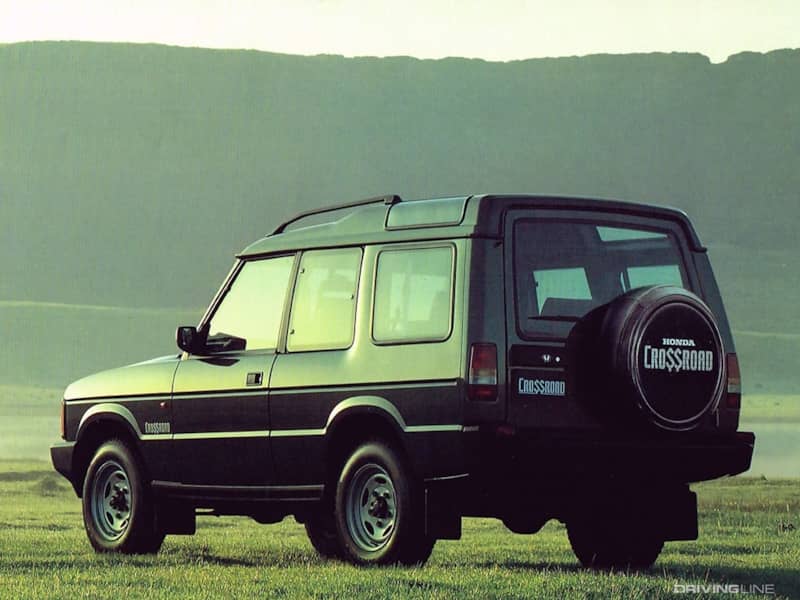
Fun fact: This is the only Honda road vehicle to ever be offered with a V8 engine.
5. Dodge Circuit
It turns out that Tesla wasn't the only company to borrow the best chassis bits from Lotus in building an electric sports car. Rather than the Elise, however, Dodge tapped the Lotus Europa, a slightly larger two-seater, as its chariot of choice for its 268hp EV, the Dodge Circuit.
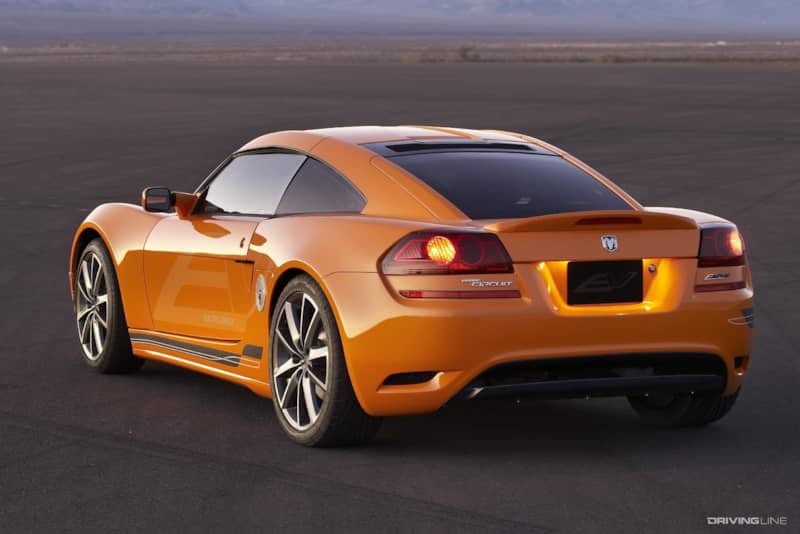
Lotus got so much EV business in the early 2000s because it was willing to farm its mid-engine expertise out to automakers that could only commit to low-volume orders (with MR cars offering the best weight distribution for at-the-time heavy battery packs). The Circuit never made it to American showrooms—and neither did the Europa, for that matter—but it goes to show that good ideas rarely exist in a vacuum.
6. Toyota Cavalier
Not content to let Chevrolet and Geo have all the badge-engineering fun with the Corolla-derived Prizm, Toyota demanded its own slice of the American dream for budget-conscious buyers in its home market. This is how the world came to know the Toyota Cavalier, which was an exact analog for its USDM counterpart save for the badge and, strangely, a nicer leather interior.
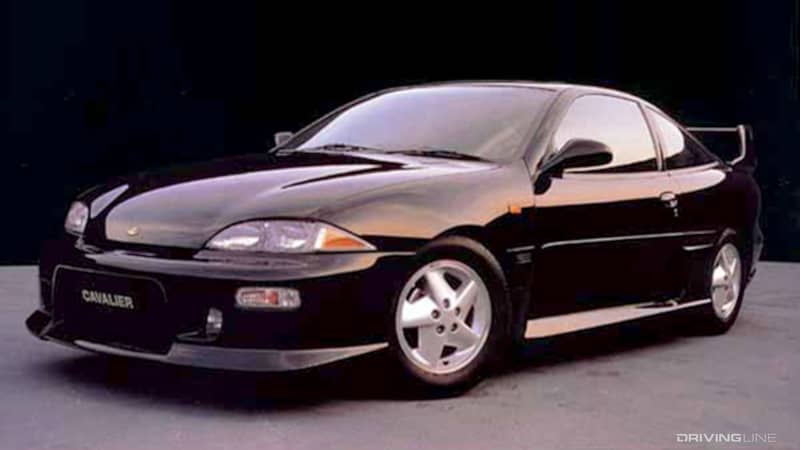
Built in America in right-hand drive form, equipped with a four-cylinder engine and an automatic transmission, and shipped to Japan, the Toyota Cavalier did its best to acquaint an international audience with the ennui associated with owning a J-body. Not even a TRD edition of the car (featuring an 11-piece body kit), nor two unsuccessful appearances in the All Japan GT Championship racing series (18th place represent!) could keep Japanese car buyers interested in the Cavalier, which would be killed off in the year 2000.
7. Volkswagen Routan
Here's a wild idea: Let's take a Dodge Grand Caravan, strip it of all the cool features that set it apart from its competition (no Stow 'n Go, no Swivel 'n Go), and try to sell it in Europe where #vanlife is real and there are quite honestly dozens of established competitors that can instantly tell that VW badge on the hood is lying.
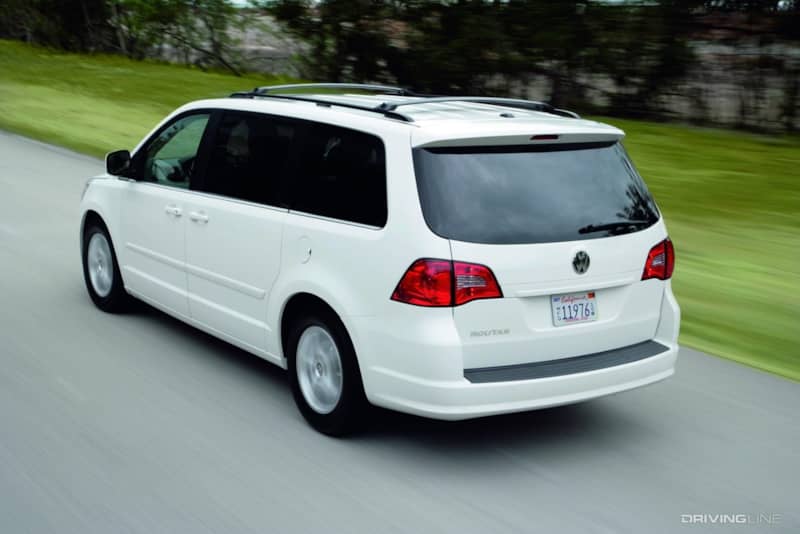
Oh, and when that doesn't work, bring it to America.
8. Mercury Villager
Ford had a long, long history of repurposing its own vehicles as Mercury models throughout the '80s and '90s. In fact, it was almost expected. We can only guess, then, that the reason the company passed over its own Aerostar and Windstar models in favor of badge-engineering the Nissan Quest into the Mercury Villager minivan was because it felt it needed a challenge. Not only that, but Ford would build the Questillager at its own plant, too.
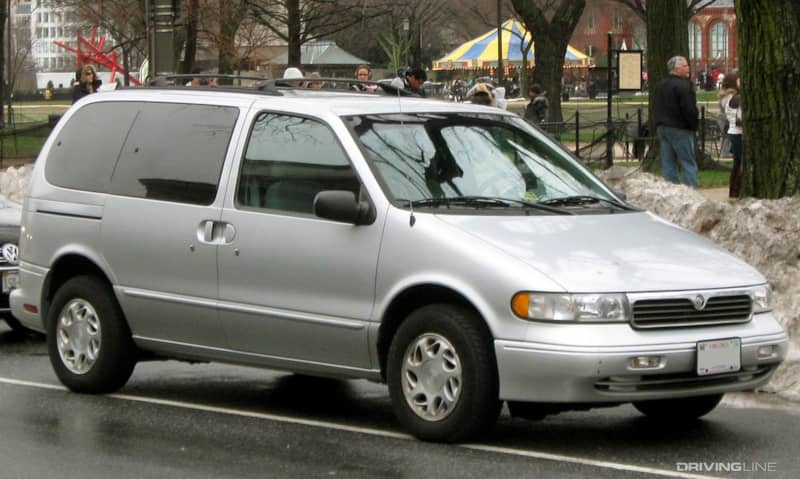
Is this the first rebadge that was done on a dare? Obviously yes.
9. Chevrolet Forester
It's a Subaru Forester with a Chevy badge, and it was only sold in India. No changes, no updates, no nothing: just pure, in-your-face corporate synergy in action.
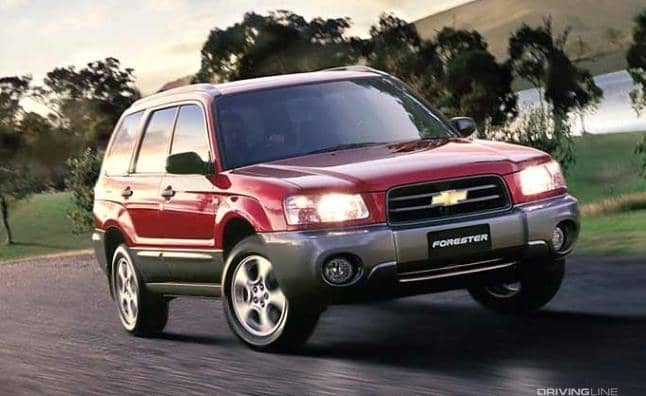
Sorry BRZ/9-2X, but this is the best cross-brand Subaru power move of all time.
10. Cadillac Catera
The last entry on our list is a sad tale of just how out-of-touch Cadillac was with its customers at the end of the 1990s. Concerned that younger buyers were being left cold by the large, plush sedans and coupes that filled its dealer lots, and concerned about the threat from upstart Japanese luxury brands like Lexus and Acura combined with BMW and Audi claiming a larger slice of the premium pie, the company's product planners panicked, blacked out and when they woke up found they had made the fateful decision to sell an Opel as a Cadillac.
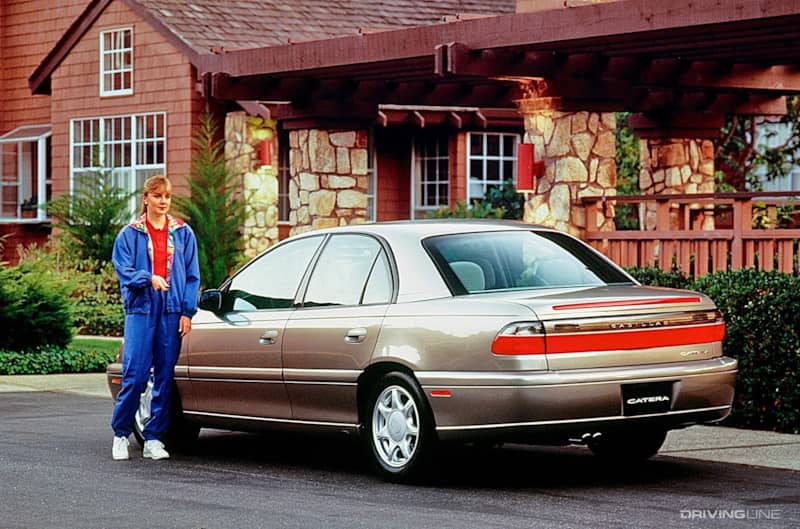
The Opel Omega might have been a perfectly acceptable car, but saddled with the "Caddy that zigs" marketing campaign, a Fisher-Price plastic interior and anonymous styling that was easily mistaken for the much cheaper Chevrolet Malibu, it never had a chance as the Catera. Throw in build quality issues, questionable reliability and low to middling performance, and this rebadge would further sink Cadillac into the mire from which the Art and Science styling campaign of the early 2000s would be forced to rescue it.




